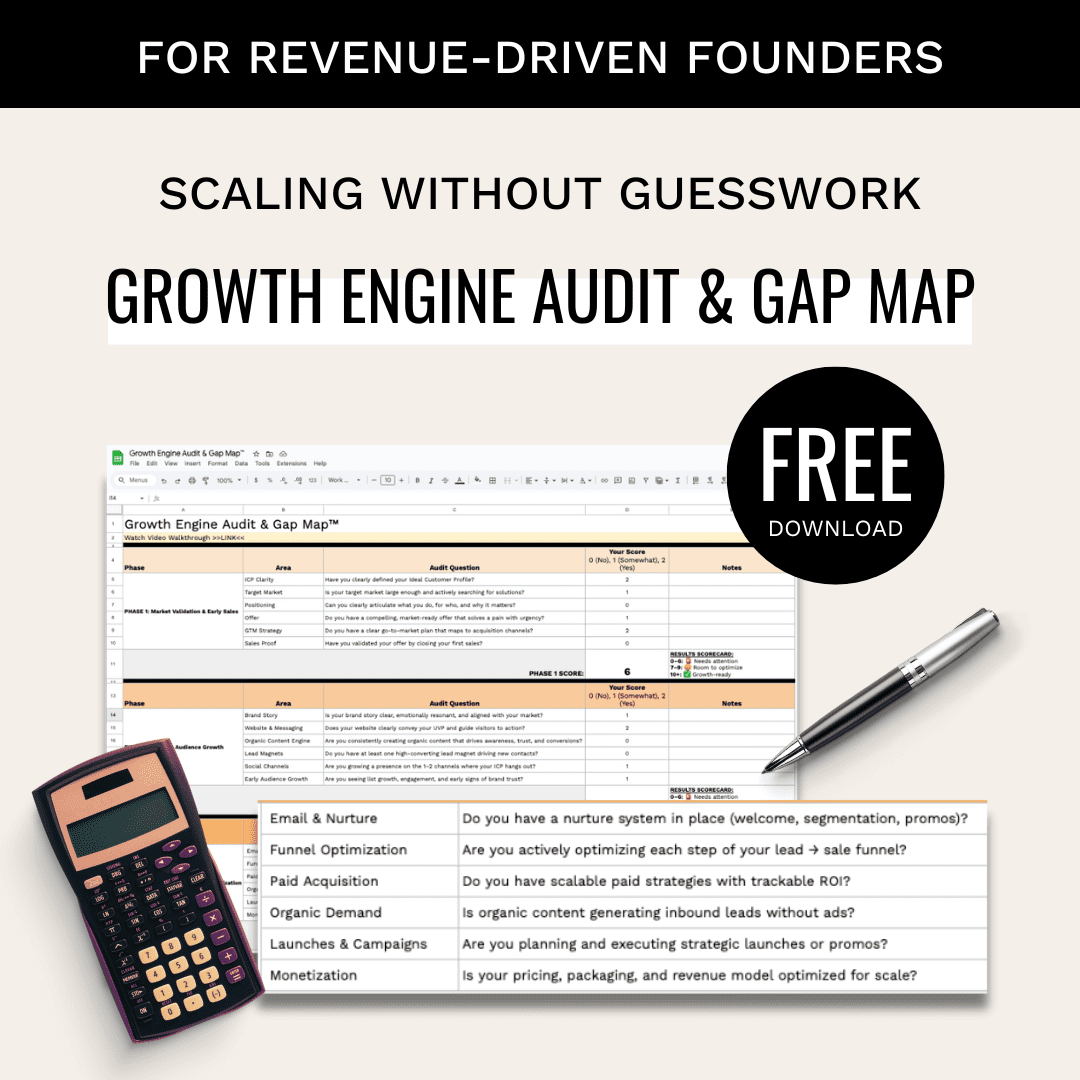AI workflow customization is transforming how marketing teams operate. By combining artificial intelligence with flexible systems, it helps teams handle tasks like content creation, campaign management, and data analysis more efficiently. Here’s why it matters:
- Improves productivity: Automates repetitive tasks and reduces human error.
- Saves time: Shrinks campaign launch times from weeks to hours.
- Boosts scalability: Handles multiple campaigns and complex operations without increasing team size.
- Enhances decision-making: Provides real-time insights and actionable data.
AI workflows also integrate disconnected systems, unify data, and align marketing efforts with business goals. Whether it’s personalizing content or predicting customer behavior, AI is helping teams focus on strategy and results, not just execution.
Key takeaway: AI workflows aren’t just tools – they’re a smarter way to manage marketing challenges while driving measurable outcomes.
Creating an AI-Driven Content Marketing Workflow
Key Benefits of AI-Driven Workflow Customization
When marketing teams adopt AI-driven workflow customization, they unlock three major advantages that reshape how they work. These benefits go far beyond automating tasks, creating a foundation for lasting improvements and a competitive edge.
Efficiency Gains Through Automation
AI-powered workflows tackle the everyday bottlenecks marketing teams face. Tasks that once took hours can now be completed in minutes, and the risk of human error in repetitive processes is almost entirely eliminated.
One standout advantage is faster time-to-market. Traditional campaign launches often involve lengthy approval cycles, manual asset creation, and coordination across platforms. AI workflows streamline this process by automating initial drafts, managing approval schedules, and preparing assets for deployment – all happening simultaneously, rather than step by step.
Another key benefit is reduced errors, freeing up time for strategic work. When AI handles data entry, campaign setup, and cross-platform publishing, teams spend less time correcting mistakes and more time focusing on creative and strategic priorities. This minimizes last-minute fixes, client complaints, and emergency corrections, creating a smoother workflow.
These improvements not only save time but also create a scalable system for marketing operations.
Scalability of Marketing Operations
Scaling marketing efforts often means taking on more work without hiring more staff. AI workflows make this possible by separating work volume from team size.
With parallel processing capabilities, AI can juggle multiple campaigns, analyze diverse data sets, and optimize various channels all at once. For example, a single AI system can personalize email campaigns for thousands of audience segments while scheduling social media posts and analyzing competitor trends – all simultaneously.
AI also excels at managing increasing complexity. As businesses grow, marketing operations often involve more tools, platforms, and requirements. AI workflows adapt by learning new integrations and handling larger data sets without requiring additional human oversight.
Expanding into new markets becomes much easier with AI. Campaigns that succeed in one region can be replicated across others, with adjustments for local preferences, time zones, and nuances. For example, a workflow managing campaigns in New York can seamlessly handle operations in Los Angeles, Chicago, and Miami with minimal extra effort.
This scalability provides a sturdy foundation for making smarter, more strategic decisions.
Data-Driven Insights for Better Decision-Making
Beyond automation and scalability, AI delivers real-time insights that transform marketing data into a strategic asset. Instead of waiting for monthly reports, teams can access continuous updates that guide both immediate adjustments and long-term strategies.
AI’s pattern recognition and predictive analytics help teams identify trends, forecast outcomes, and seize opportunities early. For instance, it can pinpoint which content performs best at specific times, predict shifts in customer behavior, and recommend the most effective audience targeting strategies.
Over time, the quality of insights improves as AI systems gather more data and refine their analysis. Early results might offer basic metrics, but as the system matures, it can provide precise recommendations for audience segmentation, content tweaks, and budget allocation that grow more accurate with experience.
AI also uncovers cross-channel connections that traditional reporting often misses. For example, it can show how email campaigns influence social media engagement, how content marketing impacts paid ad performance, or how customer service interactions affect retention efforts. These deeper insights enable teams to create more coordinated and impactful strategies across all channels.
Core Components of AI-Enhanced Marketing Workflows
Creating effective AI-enhanced marketing workflows boils down to three key components. These elements work together to form a smart, efficient system that streamlines operations and delivers results. Let’s dive into how these components contribute to a cohesive marketing strategy.
Custom AI Tools and Agents
Custom AI tools are the backbone of AI-driven marketing workflows, designed to handle specific tasks with precision.
- Content generation agents: These tools adapt to your brand’s voice, producing a variety of content for A/B testing. Whether it’s crafting social media posts or drafting email subject lines, they generate multiple versions without requiring manual input.
- Lead scoring and qualification agents: By analyzing behavioral data, engagement trends, and demographic details, these agents assign scores that indicate conversion likelihood. This lets your team prioritize high-potential leads instead of relying on outdated demographic filters.
- Email automation agents: These go beyond standard drip campaigns by monitoring recipient behavior. They tweak send times based on individual preferences and adjust content dynamically. For example, if someone opens an email but doesn’t click, the agent might send a follow-up with a different message or a special offer.
These tools continuously learn and adapt, refining their recommendations to align with your business goals and customer behaviors.
Integration Across Marketing Systems
AI workflows thrive when all marketing tools and platforms are seamlessly connected. Integration ensures smooth data flow and consistent operations.
- CRM integration: This is the foundation, giving AI tools access to customer interaction histories and preferences for more tailored communication.
- Analytics platform connections: These provide real-time performance data, enabling on-the-fly campaign adjustments, such as fine-tuning ad spend or targeting based on live metrics.
- Cross-platform data synchronization: Say goodbye to manual updates. When a lead’s status changes in your CRM, that update automatically reflects across email platforms, social media tools, and ad systems. This eliminates errors and allows for precise audience segmentation.
With everything connected, your marketing efforts not only become more efficient but also maintain consistency and accuracy.
AI Governance and Brand Consistency
Governance ensures your AI systems stay aligned with your brand’s standards and objectives, acting as a safety net for automated processes.
- Brand guideline enforcement: AI tools automatically check content against approved tone, messaging, and visual standards before anything goes live. This ensures compliance while streamlining the review process through automated approvals.
- Performance monitoring and adjustments: Governance doesn’t stop at content creation. It tracks engagement, conversion rates, and brand sentiment to identify when tweaks are needed. This prevents gradual drift away from effective messaging.
- Transparent audit trails: AI governance also includes documenting decision-making processes. This transparency helps teams understand why certain choices were made, offering insights to improve future campaigns. Whether a campaign succeeds or falls short, these trails provide clarity on what worked and what didn’t.
sbb-itb-e8c8399
Implementation Strategies for AI Workflow Customization
Integrating AI workflows into your marketing operations requires a thoughtful approach that balances ambition with practicality. By focusing on strategic steps, you can position your team to fully leverage AI’s capabilities in marketing.
Phased Rollout for Smooth Adoption
Starting small and scaling gradually is key to successfully adopting AI workflows. Begin with a single, impactful use case – like email personalization, campaign reporting, or lead scoring. This allows your team to test the waters without feeling overwhelmed.
Once you’ve chosen a pilot project, evaluate its results and gather feedback from your team. This step ensures that any issues are addressed early. After achieving success in one area, you can move on to more complex workflows, integrating multiple marketing functions along the way.
For example, after perfecting email personalization, you might connect it with AI-powered content creation. From there, you could expand to include campaign management and analytics. By taking it step by step, your team gains the skills and confidence needed to handle more advanced AI systems.
Establishing Feedback Loops for Continuous Improvement
AI workflows aren’t static – they need constant refinement to stay effective in a changing market.
Set up automated dashboards to monitor key performance indicators like campaign response rates, time saved on repetitive tasks, and overall efficiency. These metrics give you a clear picture of how well your AI systems are working and where adjustments might be needed.
In addition to data, listen to your team. Marketing professionals who use these tools daily often notice inefficiencies or opportunities that numbers alone can’t reveal. Schedule regular team check-ins to gather their insights, identify bottlenecks, and brainstorm improvements.
Combining data-driven insights with human input creates a powerful feedback loop. For instance, if your analytics show a drop in email open rates and your team reports repetitive AI-generated subject lines, you have actionable information to tweak your content algorithms.
This iterative process ensures your AI systems remain relevant and responsive. As market trends shift and customer preferences evolve, these feedback loops help you adapt, preventing your workflows from becoming outdated or counterproductive.
Setting Clear Goals and Priorities
Ongoing feedback is also essential for setting meaningful goals. Start by identifying your team’s pain points and high-impact opportunities through a needs assessment. This step ensures you’re focusing on the right problems and not wasting resources on low-priority tasks.
Define measurable objectives for each phase of your AI implementation. Instead of vague goals like "increase efficiency", aim for specific targets like "reduce campaign launch time by 30%" or "boost lead conversion rates by 15%." These benchmarks not only guide your efforts but also provide a way to measure ROI.
When prioritizing, consider three factors: potential ROI, alignment with your strategic goals, and ease of implementation. For example, a workflow promising significant efficiency gains but requiring a major system overhaul might be less practical initially than a simpler automation with immediate benefits.
Document these goals and share them with your team to ensure everyone is on the same page. Clear communication reduces resistance and helps align efforts across your organization. Plus, having documented objectives provides a reference point for evaluating success and making adjustments as your AI systems evolve.
While focusing on immediate needs, keep your long-term vision in mind. For instance, automating email campaigns might be your short-term goal, but your broader aim could be creating a fully integrated, AI-driven customer journey. This perspective ensures your implementation decisions support both present needs and future growth, all while maintaining consistent branding and operational harmony.
Conclusion: Using AI for Marketing Success
AI workflow customization has reshaped marketing, shifting it from a reactive set of tasks to a proactive, automated process. This shift isn’t just about working faster – it’s about creating a solid foundation for long-term growth and staying ahead in a competitive market.
Key Takeaways
Clear goals lead to better outcomes. The most successful marketing teams approach AI workflow customization with specific objectives in mind. Whether it’s reducing the time it takes to launch a campaign, improving the quality of leads, or scaling personalization, having measurable goals ensures that AI is solving real challenges.
Integration makes everything work better. AI workflows shine when they’re seamlessly connected to your marketing tools and systems. This integration ensures consistent messaging and provides unified insights, making every piece of the puzzle fit together more effectively.
Humans remain at the center. While AI excels at processing data, human insight is what shapes the strategy. The best workflows combine the speed and precision of AI with the creativity and judgment of people.
Adaptation keeps workflows effective. AI workflows aren’t “set it and forget it” systems. Regular monitoring, collecting feedback, and making adjustments are key to ensuring they continue to deliver results. This iterative process builds on earlier successes, driving both efficiency and scalability.
Looking ahead, as AI capabilities continue to grow, marketing strategies will evolve alongside them.
Future Outlook: Evolving with AI
The world of AI is advancing quickly, with new tools and technologies emerging all the time. Marketing teams that embrace this evolution will stay competitive by committing to continuous learning and adapting to change.
New technologies will redefine workflows. Advanced tools like natural language processing, computer vision, and predictive analytics are becoming more powerful and accessible. These advancements will open doors to deeper personalization, better content creation, and optimized customer journeys. At the same time, they’ll strengthen the core elements of AI workflows, from integration to governance.
Balancing personalization with privacy is critical. As AI becomes more central to marketing, respecting customer data will be non-negotiable. Teams will need to build workflows that deliver meaningful value without compromising privacy, ensuring compliance with regulations and earning customer trust.
Collaboration across teams will grow. Customizing AI workflows increasingly requires input from marketing, IT, data science, and other departments. Teams that break down silos and work collaboratively will be better positioned to implement effective AI-driven solutions.
The most successful marketing teams of tomorrow will see AI as a tool to amplify human creativity, not replace it. They’ll experiment with new technologies, analyze their results rigorously, and adjust their strategies based on both data and team feedback. By maintaining a balance between strategic integration and human-AI collaboration, they’ll set themselves apart in an ever-changing landscape.
Ultimately, succeeding with AI isn’t about having the flashiest tools – it’s about using AI thoughtfully, combining its strengths with the expertise of your team to achieve your specific goals. Businesses that master this balance will stand out in an increasingly crowded marketplace.
FAQs
How does customizing AI workflows boost productivity for marketing teams?
Customizing AI workflows can significantly enhance a marketing team’s productivity. By automating repetitive tasks – such as content creation, campaign tracking, and data analysis – teams can cut down on manual work, reduce errors, and redirect their energy toward strategic planning.
AI also simplifies processes by integrating tools, breaking down data silos, and enabling quicker, data-driven decisions. With more time to focus on impactful initiatives, marketing teams can operate more efficiently and align their efforts more closely with broader organizational objectives.
How can AI-powered workflows improve decision-making in marketing campaigns?
AI-driven workflows are changing the game in marketing, making decision-making smarter and faster. By analyzing massive amounts of customer data in real-time, AI can reveal insights that teams can act on immediately. For example, it can pinpoint high-value leads, tailor messages to specific audience segments, and even adjust campaign strategies on the fly to drive better outcomes.
On top of that, AI excels at spotting patterns in complex data, helping marketers choose the best channels, timing, and content for their campaigns. This not only minimizes guesswork but also improves efficiency and maximizes ROI. With these tools in place, marketing teams can shift their focus from repetitive tasks to achieving broader strategic objectives.
How can marketing teams customize AI workflows effectively while ensuring brand consistency and protecting data privacy?
To tailor AI workflows successfully, marketing teams should first establish clear brand guidelines. These guidelines ensure that AI-generated content reflects the team’s tone, messaging, and visual identity, creating a cohesive experience across all campaigns and materials.
When it comes to safeguarding data, implement strong data governance policies. This includes using encryption, managing access controls, and adhering to privacy laws like GDPR and CCPA. Training team members on privacy protocols and keeping a close eye on AI systems helps maintain compliance and security.
Lastly, make it a habit to perform regular audits of AI-generated outputs. These reviews help catch and fix mistakes, keeping workflows aligned with your brand’s objectives while ensuring efficiency and security.
Related Blog Posts
- AI Agents in Marketing: The Secret to Driving 10x Engagement & Conversions
- 5 Ways AI Can Optimize Marketing ROI for your Tech Startup
- AI Growth Marketing: Forecasting Use Cases
- AI Marketing Automation Is Taking Over: Here’s How to Stay Ahead of the Curve




